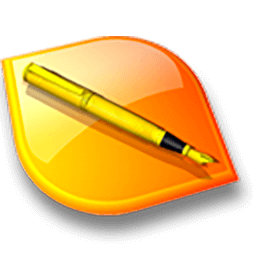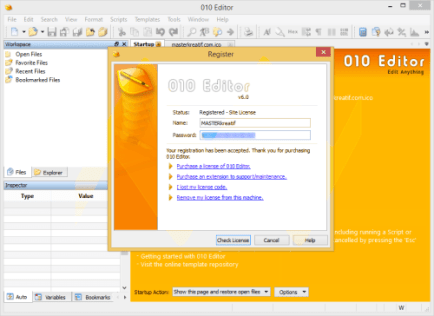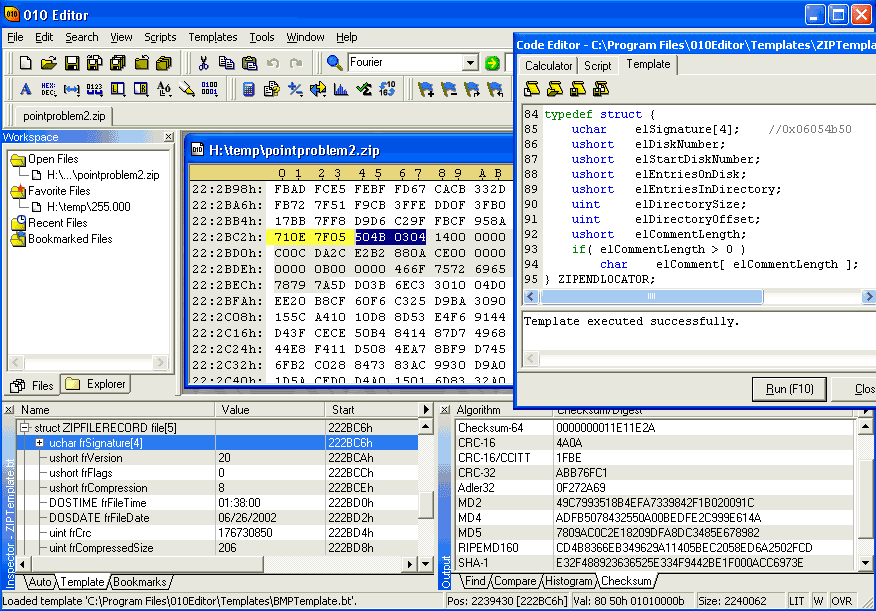
- #010 editor filenew how to
- #010 editor filenew license key
- #010 editor filenew manual
- #010 editor filenew free
As a result, the inserted file should not be deleted until the edits have been saved to disk (see Introduction to the Data Engine for more information). You cannot edit a template that was supplied with LibreOffice. NOTE: 010 Editor employs a read-on-demand data engine that allows even huge files to be instantly inserted or overwritten. Choose File > New > Templates or File > Templates > Manage Templates on the Menu bar. Note that files cannot be inserted into drives or processes since the file size of drives and processes is always fixed (but data can be overwritten using the Overwrite File tool). Select any file with the file dialog box that is shown and click the Open button. Position the cursor at the address to insert or overwrite the file and activate the desired tool. Access the Overwrite File using the ' Edit > Insert/Overwrite > Overwrite File.' menu option. Access the Insert File tool by clicking the ' Edit > Insert/Overwrite > Insert File.' menu option or pressing Ctrl+I. The Insert File tool inserts the bytes from another file into the current file at the current cursor position whereas the Overwrite File overwrites any bytes in the current file with another file starting at the current cursor position. It happens when one create a new resource item (e.g. Installing Files on Open from the RepositoryĪ file can easily be inserted into another file using the Insert File or Overwrite File tools. Unknown resource types are edited with either a HEX editor or a generic text.Using 010 Editor - Templates and Scripts.See the 010 Editor Directory Options dialog for more information. Why the need to figure out the current working directory and append it to the microcode binary blog filename? Well, it turns out that the 010 Editor defaults to resolving file pathnames in a slightly unusual manner. The problem with this approach is that the output would have been intermingled with all the spurious output. I could have sent the script output to the output pane using Printf statements and then saved the output pane contents to a file using OutputPaneSave. the output pane contains no useful output and it would be useful if there was an API to silence such spurious output such as “Executing script”, “Executing template”, etc.

Note the output from the script does not appear in the output pane but in an “untitled” pane. Here is what you should see when the script loops through all the Intel microcode binary blobs listed in ucd.lst: I wrote a good template for my binary format, but now i want to compare two files and stash differences with in next format: TemplateVariableName TemplateVariableType valueFile1 valueFile2.
#010 editor filenew how to
Here is what you see when you load the script into the 010 editor and invoke it using F7: How to compare files using 010 Editor, and bound with template variables.
#010 editor filenew manual
According to the 010 Editor online manual

The second thing you will probably notice if you are a reasonably proficient C programmer is the switching of file handles and the saving and restored of file offsets as the script works on different files. Outfilename=InputSaveFileName("Output filename","(*.out) ") Īs you can, 010 Editor scripts, like templates, are written in a very C language-like syntax. Assign a filename to output file and close it SPrintf( outline, "%s %s %d/%d/%d %s\r\n", filename,ĭateStr(header.Date), CpuFamily(header.Signature),ĬpuMode(header.Signature), CpuStepping(header.Signature), Use a template to get the relevant information Something is wrong with the specified microcode file SPrintf(filename1, "%s%s", cwd, filename) If( FileOpen( listfilename ) 0 & filename = 0xA )
#010 editor filenew license key
Note: To apply the license key open 010Editor and select 'Tools -> Register'.
#010 editor filenew free
Please feel free to use the keys listed below, but fill in your information so we know if we need to expand our license requirements. Open text file containing a list of files EDG has a total of 60 licenses available for use for 010 Editor. Listfilename = InputOpenFileName( "Choose file contacting list of Intel Microcode files", Input text file containing a list of files to process Purpose: Output certain header information for a list of Intel microcode files. Here is the 010 Editor script I developed for this exercise: \being somewhat lazy, I left some helper functions here rather than moving them to my 010 Editor script. SPrintf(s, "%0.4X-%0.2X-%0.2X", date & 0xffff, date > 24, (date > 16) & 0xff) īasically, it is a cut-down version of the template I used on my previous post.


#define INTEL_MICROCODE_HDR_SIZE (sizeof header) Purpose: Parse Intel Sandy Bridge and later microcode headers in Lenovo firmware.


 0 kommentar(er)
0 kommentar(er)
